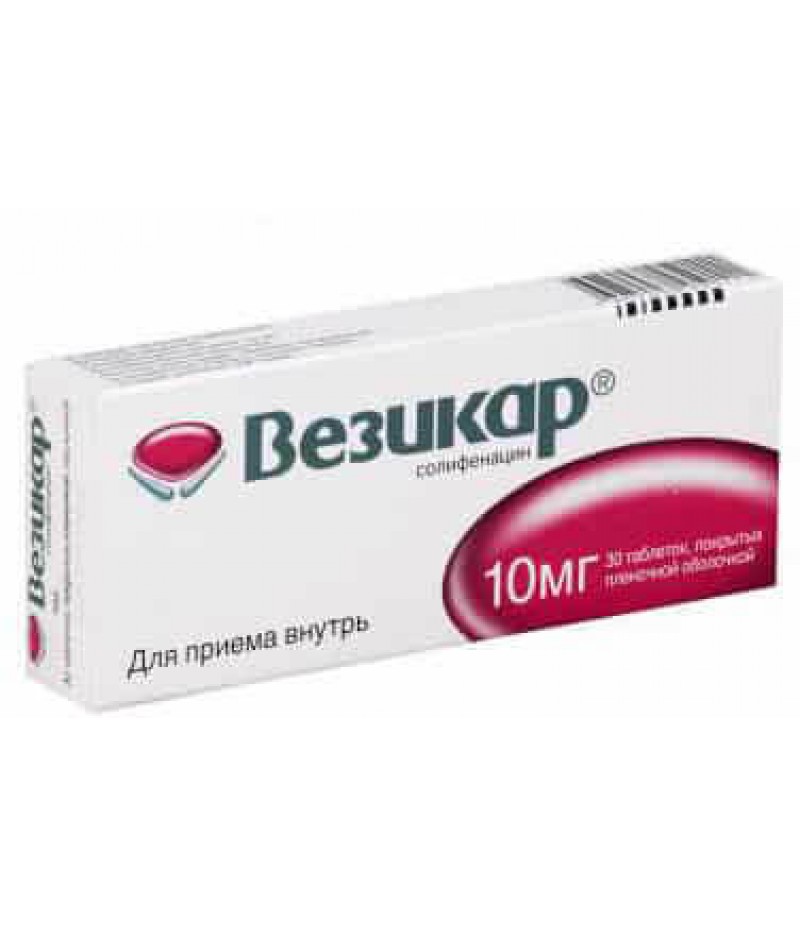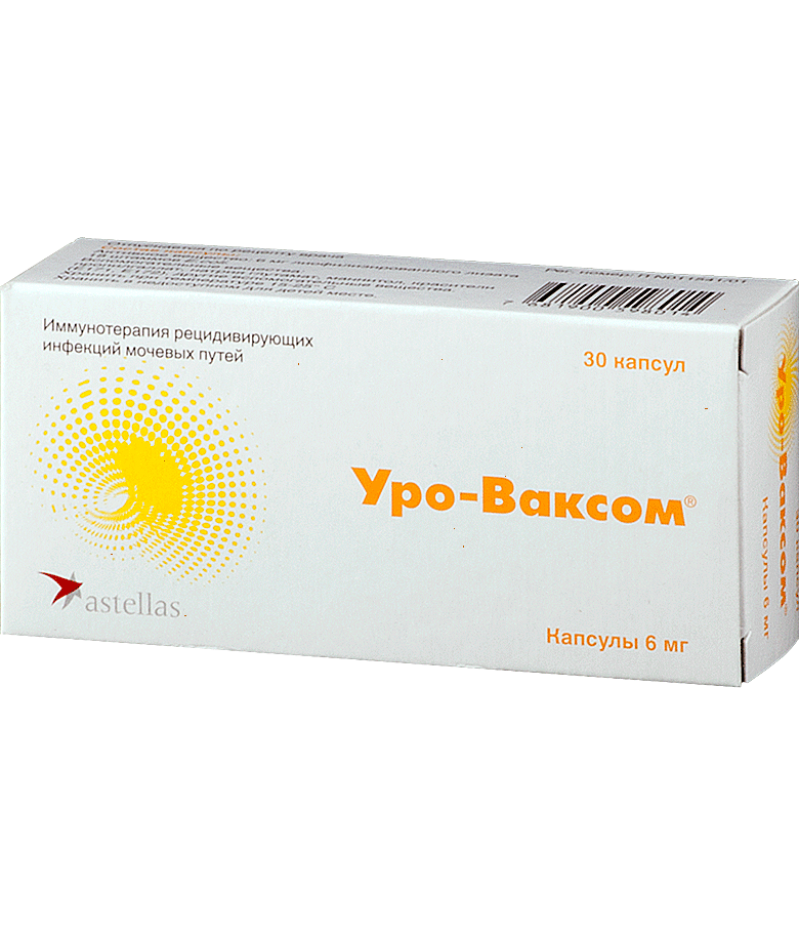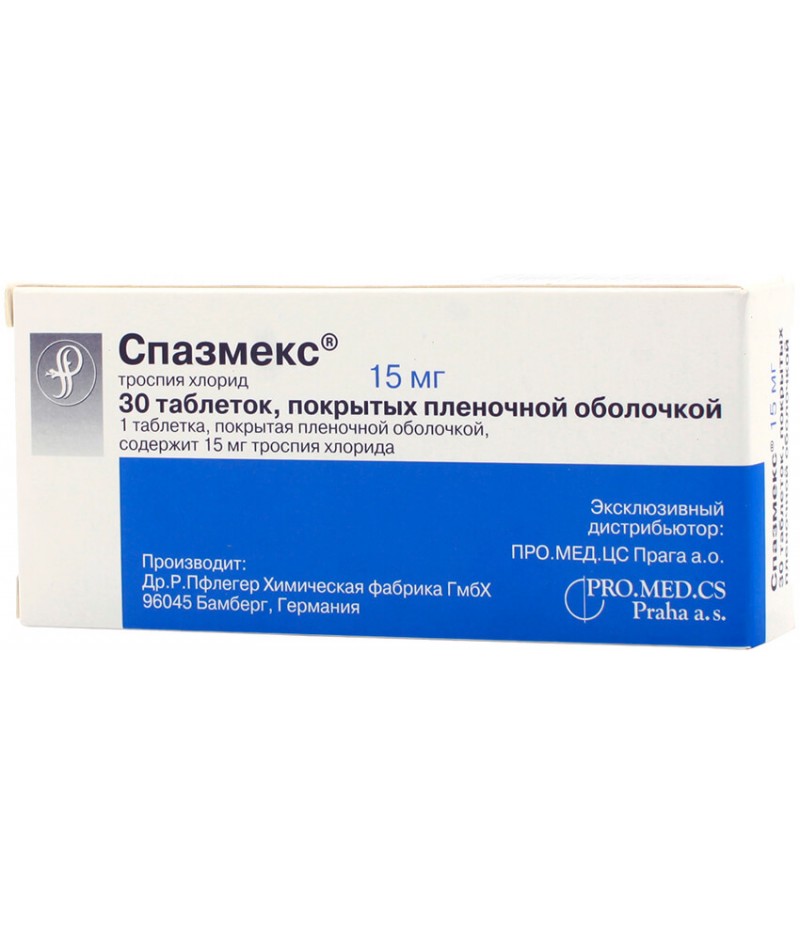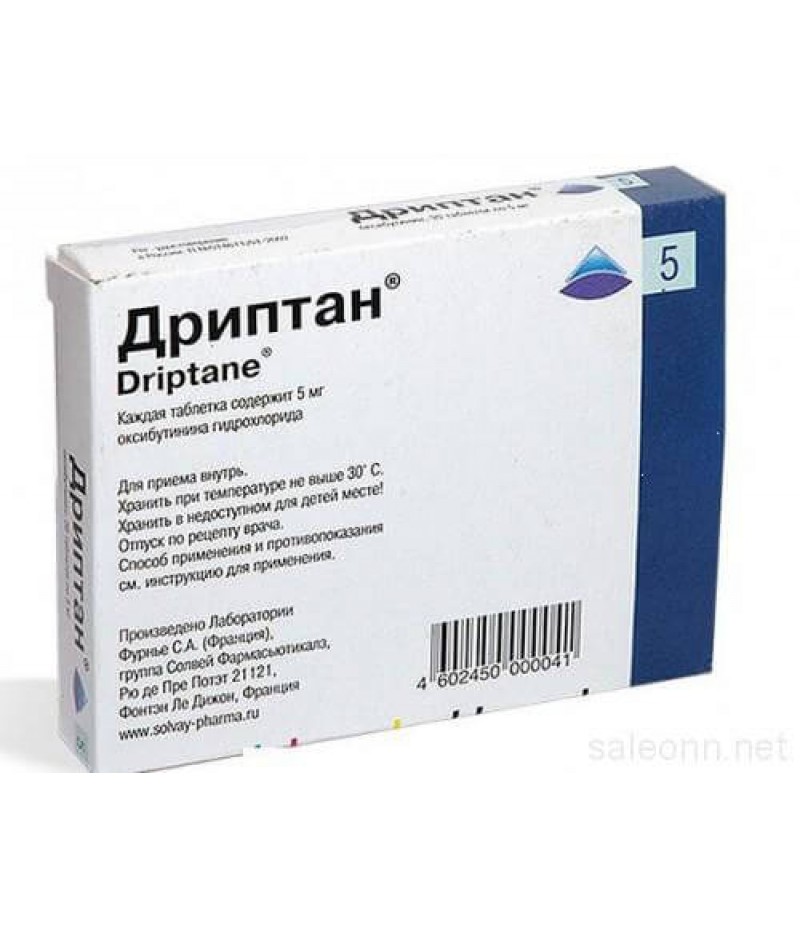Vesicare tabs 10mg #30
- $42.16
- 2 or more $40.99
- 3 or more $39.90
- Availability:In Stock
Instruction for VesicareReed more and buy Vesicare tablets on this pageCompositionIn 1 tablet of medicine contains 5 mg or 10 mg of solifenacin succinate, depending on the form of release.Excipients: Mg stearate, hypromellose, sta..
Tags: tabs
Instruction for Vesicare
Reed more and buy Vesicare tablets on this page
Composition
In 1 tablet of medicine contains 5 mg or 10 mg of solifenacin succinate, depending on the form of release.
Excipients: Mg stearate, hypromellose, starch, lactose.
Form of issue
The medication is available in the form of rounded, convex tablets with the logo of the issuing company on one side, coated with a light yellow color in Vesicare 5 mg and light pink in Vesicare 10 mg (depending on the concentration of the active substance). In cardboard packs there are from 1 to 3 blisters for 10 pieces of tablets in each.
pharmachologic effect
Solifenacin is a specific inhibitor of membrane proteins responsible for signal transmission in neuromuscular synapses, acetylcholine muscarinic receptors (m-cholinergic receptors). The drug has spasmolytic and holinoliticheskoe action (reduces the tone of the smooth muscle tissue of the urinary tract). Solifenacin is characterized by an almost complete lack of affinity for ion channels and other receptors.
When using Vesicare cumulative effect is observed - the maximum effect is registered after a month of administration and persists in case of prolonged use (at least 1 year).
Pharmacodynamics and pharmacokinetics
When taken orally, the time to reach C max (maximum concentration) of solifenacin in the blood plasma is 3-8 hours. Solifenacin reacts with plasma proteins and binds to them by approximately 98%. These indicators do not depend on food intake and reception time. Also, there is no dependence on the sex and age of the patient. In patients with renal insufficiency, an increase in the maximum concentration of the active substance in the blood can be observed by 30%.
The drug is metabolized in the hepatic system. It is excreted in urine and feces, there is also an alternative way of metabolism (4R-hydroxysolifenacin, N-oxide and other metabolites were detected in the plasma). The half-life of the drug is 45-68 hours.
Indications for use
This drug is used for urgent (insurmountable) urinary incontinence, nocturia and rapid urination, which is characteristic of the syndrome of a hyperactive bladder.
Contraindications
severe gastrointestinal diseases;
hepatic insufficiency in pronounced and terminal forms;
kidney failure (including when taking inhibitors of CYP3A4);
hemodialysis;
myasthenia gravis;
retention of urination;
closed-angle form of glaucoma;
hypersensitivity or intolerance to the components of the drug;
children and adolescence;
galactosemia and lactose insufficiency.
There is no data on the effect of this drug on an organism younger than 18 years. There are no contraindications for the elderly. Use with caution in pregnancy and lactation.
Side effects
Frequently marked:
constipation;
the urge to vomit and nausea;
pain in epigastrium;
violations of accommodation;
dryness of pharynx and oral cavity;
retention of urination;
dry eyes;
drowsiness;
dryness of the nasal cavity and skin;
swelling of the lower extremities;
feeling tired.
Rarely recorded:
intestinal obstruction;
dizziness, moderate retardation and headache;
acute ishuria (delayed urination);
vomiting;
hallucinations;
drowsiness;
allergic responses (itching, rash, urticaria).
Instructions for Vesicare (Method and Dosage)
The drug is used orally, squeezed a large amount of liquid 1 tablet with a concentration of solifenacin 5 mg 1 time per day. According to the indications the dose can reach 10 mg. The medication can be administered regardless of the time of day and meal.
Instructions for use Vesicare indicates the possible effect of the active substance on the quality of visual perception and the work of the central nervous system. Do not take the drug when working with complex mechanisms, driving.
Overdose
With a single dose of 100 mg of solifenacin, headache, weakness, dry mouth, mild dizziness, blurred vision may occur. Cases of acute overdose are not documented.
In case of an overdose, the reception of activated carbon is indicated. You may need to rinse the stomach, but without calling for vomiting. Further treatment is symptomatic.
Interaction
With simultaneous administration with drugs blocking m-cholinergic receptors, a more pronounced therapeutic effect is observed. M-holinomimetiki reduce the medicinal effect of solifenacin. The drug can influence the action of drugs that stimulate the motility of the digestive system.
Terms of sale
You don't need a prescription to buy Vesicare.
Storage conditions
The drug should be stored in an inaccessible place for young children at room temperature (not more than 25 ° C).
Shelf life - 3 years.
special instructions
Before prescribing the drug, you should ascertain the presence of other possible causes of urination disorders (infection of the genitourinary system, kidney and ureter disease, heart failure). If an infection of the genitourinary system is detected, antimicrobial treatment should be performed before taking this medication. It should be taken with care when working with vehicles and when dealing with hazardous activities.
Reviews of Vesicare (opinion of patients)
Reviews of Vesicare on the medical topics show that the drug could not prove itself, as the most effective tool in the fight against the problem of urinary incontinence. Most of the patients' histories do not report the onset of relief after taking the drug. In addition, many users report frequent side effects.
However, there are data on cases when the best result among the analogues was noted after the administration of Vesicare; when other medicines did not help. It is important to remember that the therapy of the syndrome of the hyperactive bladder is complex, and largely depends on the individuality of each particular organism.




